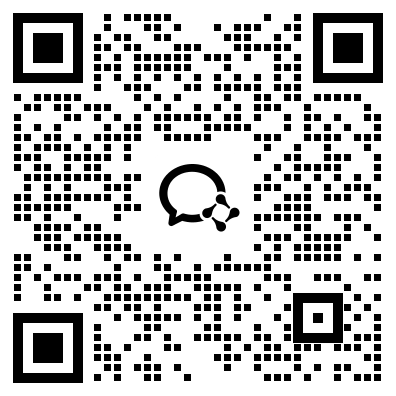Passage 3
An artificial “tongue” which can taste subtle differences between whiskies could help tackle the counterfeit alcohol trade, according to engineers.
They have built a tiny taster which exploits the properties of gold and aluminum to test differences between the spirits.
The technology can pick up on the subtle distinctions between the same whisky aged in different barrels.
It can tell the difference between whiskies aged for 12, 15 and 18 years. Engineers say the “tasted” the differences with greater than 99% accuracy.
Food safety testing
Alasdair Clark, of the University of Glasgow’s school of engineering, said: “We call this artificial tongue because it acts similarly to a human tongue——like us, it can’t identify the individual chemicals which make coffee taste different to apple juice but it can easily tell the difference between these complex chemical mixtures.”
“We’re not the first researchers to make an artificial tongue, but we’re the first to make a single artificial tongue that uses two different types of nanoscale metal ‘taste buds’, which provides more information about the ‘taste’ of each sample and allows a faster and more accurate response.”
He said the tongue could be used to “taste” virtually any liquid——not just whisky. Dr Clark added “In addition to its obvious potential for use in identifying counterfeit alcohols, it could be used in food safety testing, quality control, security — — really any area where a portable, reusable method of tasting would be useful.”
Whisky was poured over a chequerboard pattern of the two metals——which act as “taste buds”——and researchers then measured how they absorbed light while submerged. Subtle differences which were highlighted on the artificial tongue allowed the team to identify different types of the spirit.
The team used the tongue to sample a selection of whiskies from Glenfiddich, Glen Marnoch and Laphroaig.
Research was conducted by engineers and chemists from the universities of Glasgow and Strathclyde.
Their paper, titled ‘Whisky tasting using a bimetallic nanoplasmonic tongue’, is published in Nanoscale.
37. How do researchers use the artificial “tongue” to tasting subtle differences between whiskies? ( )
A. By taste buds.
B. By identifying chemicals.
C. By the ‘taste’ of each sample.
D. By the way to absorb light when submerged.
【答案】C。根据第 6 段 make a single artificial tongue that uses two different types of nanoscale metal ‘taste buds’ which provides more information about the ‘taste’ of each sample 可知智能舌头使用不同型号的金属纳米材料制作的味蕾来品鉴样品,而选项 A 表述并不符合对智能舌头的表述,此味蕾非彼味蕾,只是功能与人的味蕾相似而已,A 项表述不准确,选项 C 表述更合适;根据第 5 段 it can’t identify the individual chemicals…可知智能舌头并不能辨别化学物质,选项B表述错误;根据第 9 段researchers then measured how they absorbed light while submerged.可知光线的混合是由研究者操作,并非智能舌头,所以选项 D 表述有误。故正确答案是选项 C。
38. What is the purpose of inventing the artificial tongue? ( )
A. Identify different types of the spirit.
B. Distinguishing fake alcohol.
C. Exploiting the properties of gold and aluminum.
D. Tasting subtle differences between whiskies.
【答案】B。首段明确了其目的,根据第一段 An artificial “tongue” which can taste subtle differences between whiskies could help tackle the counterfeit alcohol trade, according to engineers.可知可以解决假冒酒的贸易问题。选项 A:区别不同型号的烈酒;选项 B:区分假酒;选项 C:开发金和铜矿物;选项 D:区分不同威士忌之间的区别。选项中只有 B 项表达符合文意,故正确答案是选项 B。
39. What is the “artificial tongue” actually? ( )
A. A machine for food safety testing.
B. Two taste buds.
C. A chequerboard pattern made of gold and aluminum
D. A large barrel.
【答案】C。选项 A:食品安全测试的机器;选项 B:两种味蕾;选项 C:由金和铜金属组成的方格状物体;选项 D:木桶。结合文章内容可知选项 BD 可以直接排除,选项 A表述过于片面。根据第 9 段…a chequerboard pattern of the two metals——which act as “taste buds”可知选项 C 表述无误。故正确答案是选项 C。
40. Which of the following statements is not true? ( )
A. Research was conducted with the support of two universities.
B. Scientists have done a lot of attempts to invent such artificial “tongue”.
C. Artificial “tongue” works to identify crucial individual chemicals.
D. Artificial “tongue” has surpass 99% success to taste differences between whiskies.
【答案】C。根据第 5 段 it can’t identify the individual chemicals 可知它无法识别单一化学元素,选项 C 表述错误。根据倒数第二段 Research was conducted by engineers and chemists from the universities of Glasgow and Strathclyde.可知研究是由两所大学合力实施的,选项 A表述准确;根据第 6 段 We’re not the first researchers to make an artificial tongue, but we’re the first to make a single artificial tongue that uses…可知科学家对智能舌头的研究已经有相当一段时间,可以推出选项 B 表述正确;根据第 3 段 Engineers say the “tasted” the differences with greater than 99% accuracy.可知选项 D 表述正确。只有 C 项表达不符合文意,故正确答案是选项 C。
41. What does this passage mainly talk about? ( )
A. How Scientists invent artificial “tongue”.
B. Scientists successfully find methods to taste subtle differences between whiskies.
C. An artificial “tongue” to tackle counterfeit alcohol.
D. Methods to achieve food safety testing.
【答案】C。结合文章表述可知文中的高频词为 artificial tongue。选项 BD 主体词错误,排除。选项 A:科学家们如何研发出了智能舌头;选项 C:能解决假酒问题的智能舌头。根据首尾原则,作者在一开始就提出了这项研究的成果,就是可以解决假酒贸易问题。后文顺着智能舌头如何可以区别真假做出论述,而并不是描述研究过程。故正确答案是选项 C

黑龙江试题资料

中国银行招聘笔试题解析 What is the purpose of inventing the arti
黑龙江华图 | 2021-10-27 08:45
收藏









